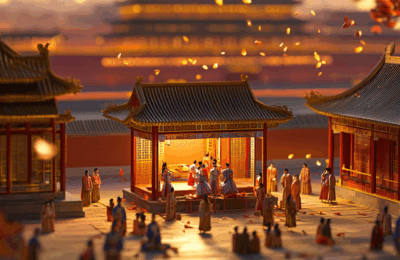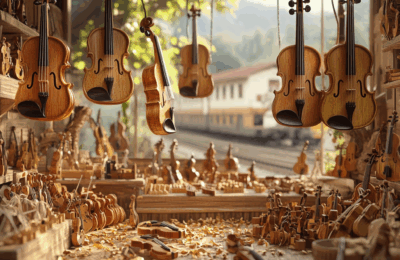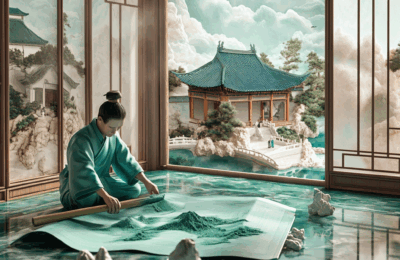這一抹藍,不來自天空,也不來自水,而是千度火焰中鍊出的色彩記憶——它叫「景泰藍」。這門技藝,最初舶自阿拉伯,傳入元代,盛於明景泰年間,是中國工藝史上唯一以年號命名的藝術。它曾被乾隆視為帝王之器,亦悄然現身於《紅樓夢》的貴族生活中,在細節中流轉出深宮的審美與氣息。它以銅為骨,絲為線,琺瑯為色,火為魂,一件器物,要歷經百道工序、數十匠人之手方得成形。沉寂於亂世,幾近失傳,卻在林徽因等人的努力下重燃爐火,成為「新中國第一份國禮」。今天的景泰藍,已走出廟堂與櫥窗,在北京地鐵景泰站的壁畫上熠熠生輝,也在景泰藍博物館中被觸摸、被講述。它不再遙不可及,而是生活中沉靜流淌的一抹東方光。這,就是景泰藍——不言不語,卻從未熄滅的文明溫度。This blue is neither of sky nor water, but a chromatic memory forged in fires of a thousand degrees—its name is “Jingtai Blue.” The craft first arrived from the Arab world, entered China in the Yuan dynasty, and flourished under the Ming emperor Jingtai; it is the only art in Chinese craftsmanship named after a reign title. Once prized by the Qianlong court as an imperial vessel, it also slips quietly into the aristocratic life of Dream of the Red Chamber, where the details breathe the aesthetics of the inner palace.
It takes copper as its bone, filaments of wire as its lines, enamel as its color, and fire as its soul. A single piece passes through a hundred procedures and the hands of dozens of artisans before it takes shape. Silenced by turmoil and nearly lost, it rekindled its kilns through the efforts of figures such as Lin Huiyin, becoming the “first national gift” of New China.
Today, Jingtai Blue has stepped out of halls and display cases: it gleams across the murals of Beijing’s Jingtai Subway Station and is touched and retold in the Cloisonné Museum. No longer remote, it has become a quiet current of Eastern light flowing through daily life. This is Jingtai Blue—a wordless, unextinguished warmth of civilization.










